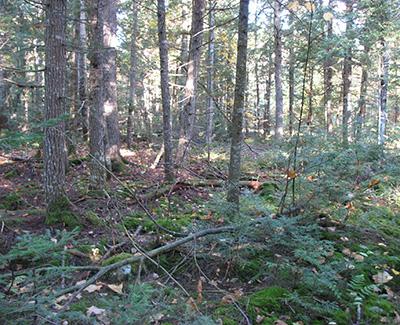Extending the Acadian Variant of the Forest Vegetation Simulator to Intensively Managed Stands

Many years ago, researchers in Maine developed a model to predict forest growth and yield. The Acadian Variant of the Forest Vegetation Simulator uses data mainly from naturally-regenerated forest stands. Consequently, management activities, such as vegetation control, pre-commercial and commercial thinning, planting, and tree genetic improvement, are not well represented in the model, which can lead to significant biases. Commercial thinning is a widely used silvicultural method in spruce-fir forests of the northeastern United States, but there is limited work on predicting both short- and long-term individual tree- and stand-level responses to this treatment. Stand responses to partial harvest treatments, such as commercial thinning, were an influential factor in the last wood supply assessment for Maine.
NSRC researchers used forest measurements from 16 study locations across northern Maine, which are part of the University of Maine’s Cooperative Forestry Research Unit's Commercial Thinning Research Network. They modeled stand-level and individual tree response to various commercial thinning treatments.
Researchers showed that stand-level thinning treatment response functions for spruce-fir stands significantly improved predictions of annual stand-level basal area growth and mortality of trees. They also demonstrated improvement for species-specific, individual tree-level annual diameter growth, height to crown base increment, and mortality functions. When researchers included their newly developed thinning modifiers into stand- and individual-tree growth models, they achieved significant improvement in prediction over baseline models. The individual-tree approach was superior for predicting long-term response to thinning treatments. Individual tree thinning response functions are implemented in the Acadian Variant of the Forest Vegetation Simulator and are available online under the Northeast variant.
